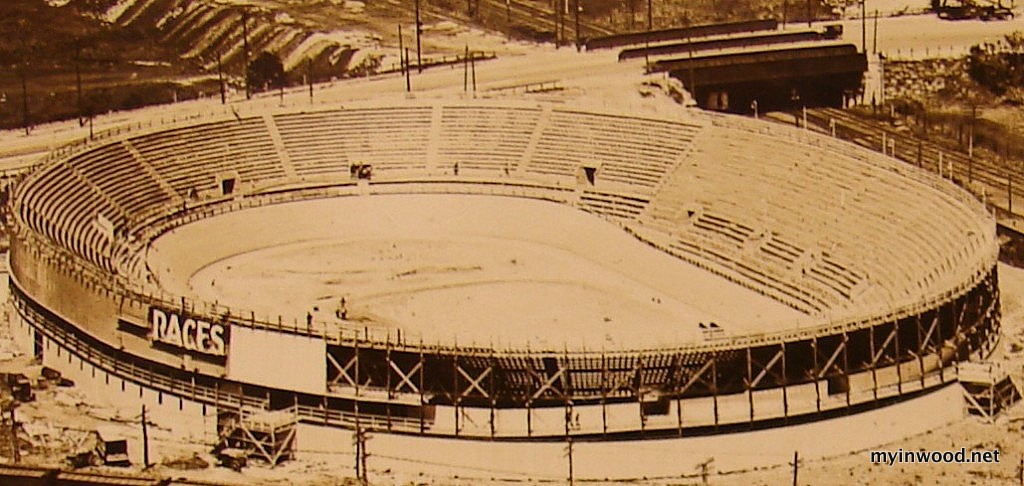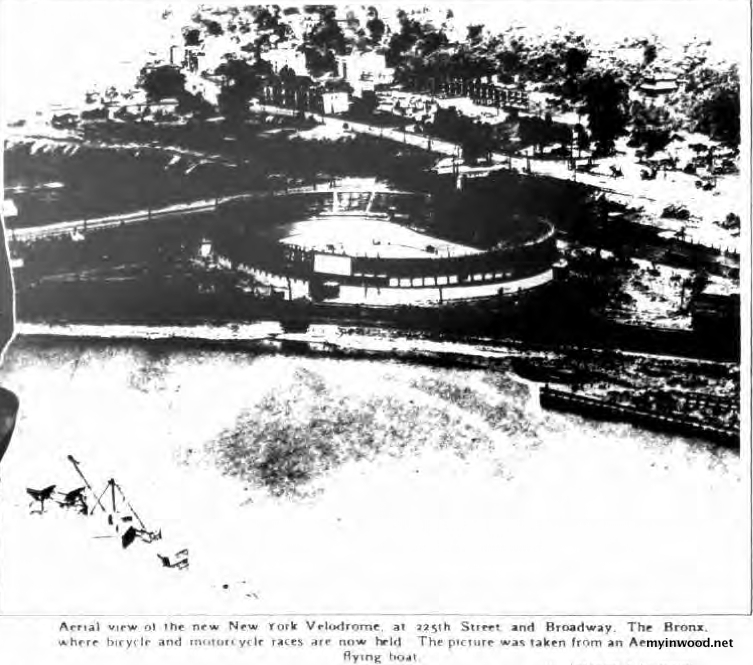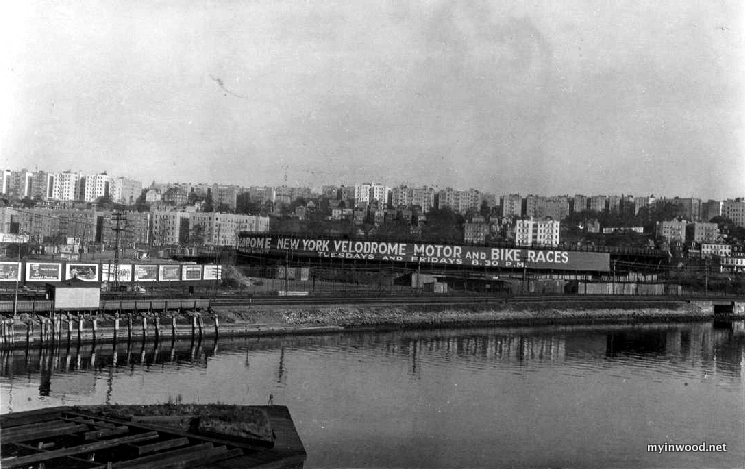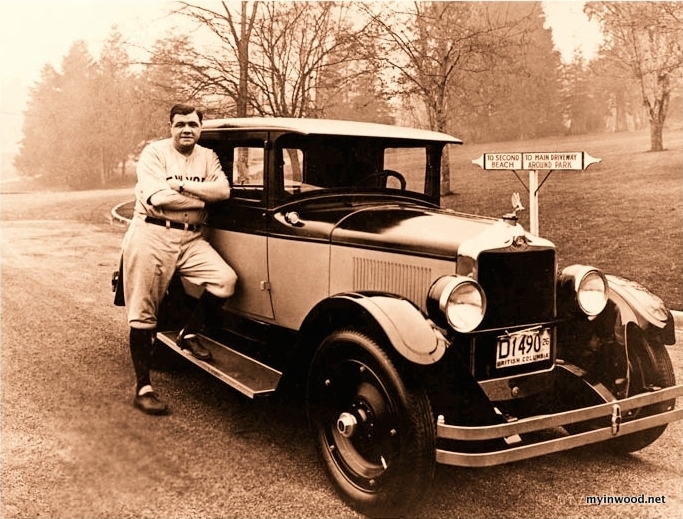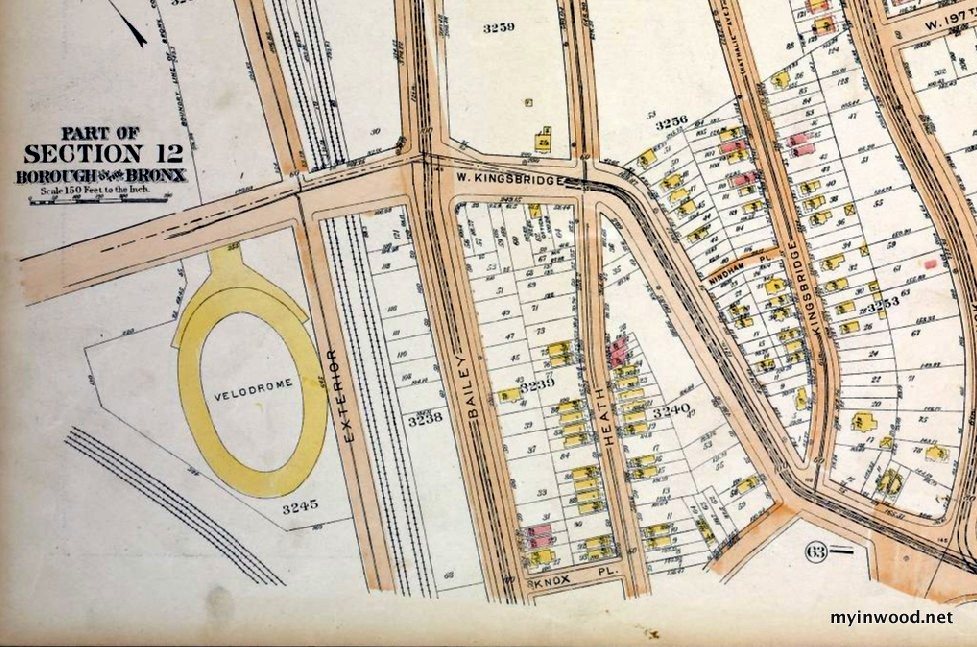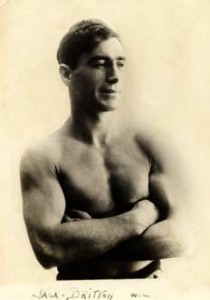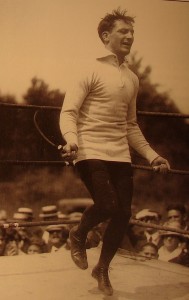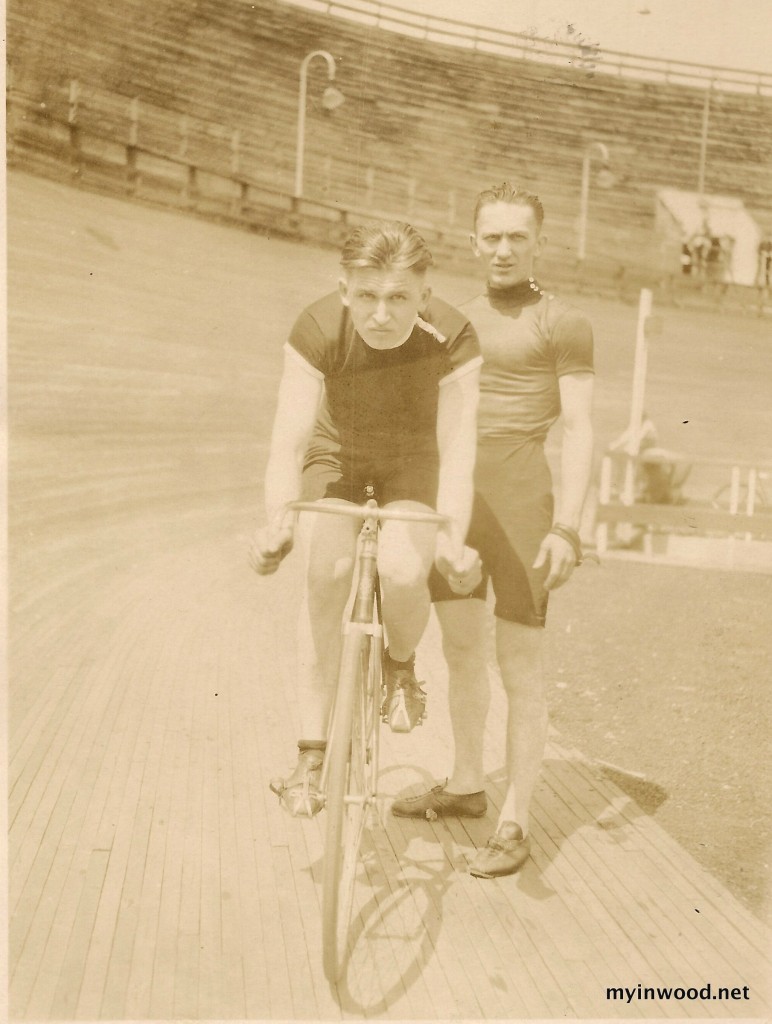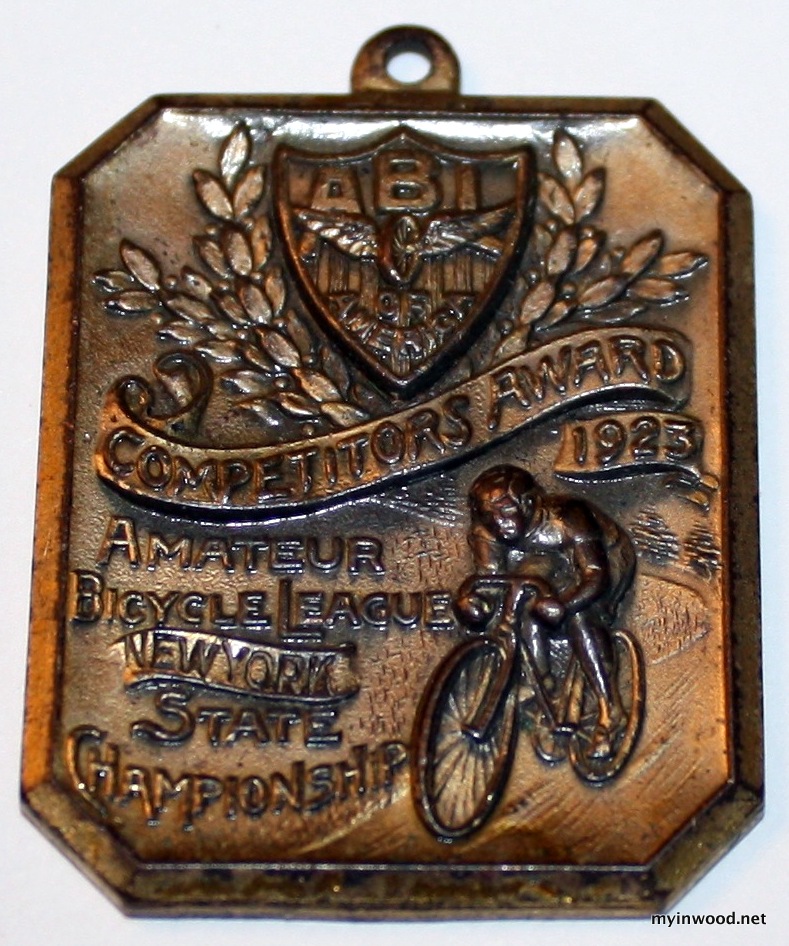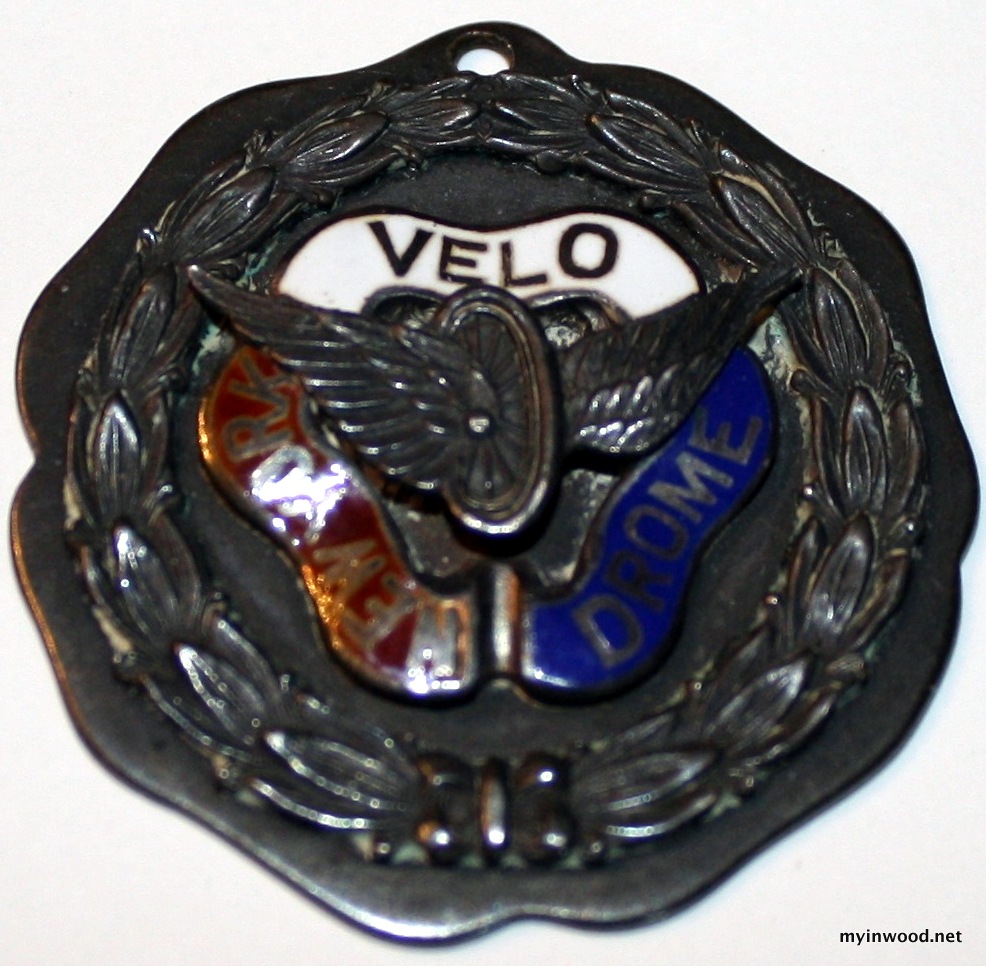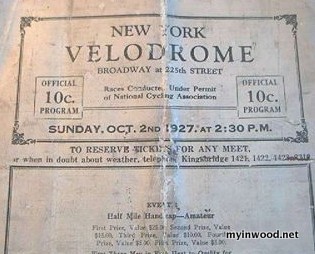On 225th Street near the Harlem River, roughly where the Target department store sits today, once stood one of the great Gotham sporting venues of the 1920′s, the New York Velodrome.
When the Velodrome opened May 30th, 1922 the quarter-million-dollar bike track, built to hold 16,000 fan, was packed.
The rabid fans were out in force to witness a no holes barred cycling competition featuring international star athletes. Competitive cycling first gained popularity in the 1880′s and by the 1920′s the Velodrome was the hottest ticket in town.
Essentially a huge wooden saucer, the Velodrome had steep banks designed to send racers flying past one another in a dizzy blur of spokes, sweat and pain. Gaining speed, riders were often involved in violent collisions which left the track slick with blood.
Notorious six-day races, free for all amateur events, sprints and motor-paced racing would become regular events, but that opening night the organzizers had a special surprise for everyone.
After several races, including a devastating upset for veteran favorite Percy Lawrence at the hands of Italian rider Georges Columbatto, the baseball legend Babe Ruth took to the track.
Starter pistol in hand, crowd going wild, Ruth fired the shot that sent legs pumping in a sprint race that featured rivals Ray Eaton, Alf Goullet and Orlando Piani.
While a jazz band played in the background, Eaton, of East Orange, New Jersey captured best time in two out of three heats.
Designed primarily for cycling, the Velodrome was became a multi-purpose facility. Used for a variety of sporting events, the Velodrome was also host to a World Welterweight title bout shrouded in controversy.
On June 26, 1922, for twelve fast and furious rounds, Jack Britton, aka “The Boxing Marvel,” out boxed, crowded and even bloodied opponent Benny Leonard.
Then in round thirteen, Leonard, a Jewish boxer dubbed “The Ghetto Wizard” for his Lower East Side neighborhood, threw a blow to Britton’s midsection. Britton doubled over and fell to his knees. While rising to one knee, Leonard swooped in and stuck Britton with a light blow to the face. As famed sports writer Damon Runyon looked on in disbelief, referee Pat Haley disqualified comeback kid Benny Leonard. For years it was rumored Leonard had bet heavily against himself and intentionally fouled his opponent in a last ditch effort to throw the fight.
For eight glorious years the Velodrome was the scene of awe and excitement, before a suspicious fire burned the fabled venue to the ground.
In the early morning hours of August 4th, 1930 garage workers reported seeing smoke rising from the wooden structure. By the time fire units were dispatched, the smoldering fire had become a three-alarm inferno. Firemen helplessly pulled back and focused their attention on keeping the fire from spreading to the surrounding neighborhood. By 4:00 am, flames could be seen as far away as Washington Heights. By dawn, the Velodrome was a smoldering ash heap, never to be rebuilt.
Despite the late hour, police would later learn that Velodrome supervisor Jack Neville and two other employees were in the facility when the fire broke out. While an arson investigation never materialized, those close to the case couldn’t help but note the fire occurred just weeks after a competing Velodrome opened on nearby Coney Island.
